Banaras / Varanasi : Uttar Pradesh, India
One of the most amazing plces i've ever traveled to. This is one city that is worth traveling as many times as you can- “older than history, older than tradition, older even than legend and looks twice as old as all of them put together”. A Varanasi trip is considered incomplete if you do not witness the Gange Aarti that is performed each evening at the Ghats by priests.The city merges Hinduism and Shaivism, is home to Buddha’s first sermon in Sarnath, is one of the ancient cities visited by the Chinese traveler Hiuen Tsang, and was also the city of the Muslim saint Kabir
Kashi / Banaras/ Varanasi (from Varuna river and Assi ghat hence the name Varanasi)/Mahasmashana (The Great Cremation Ground)/ Anandvan (Forest of Bliss) / Avimukta (Never Forsaken) in Uttar Pradesh, India is the most visited pilgrimage destination in all of India & is one of the world’s oldest continuously inhabited cities.
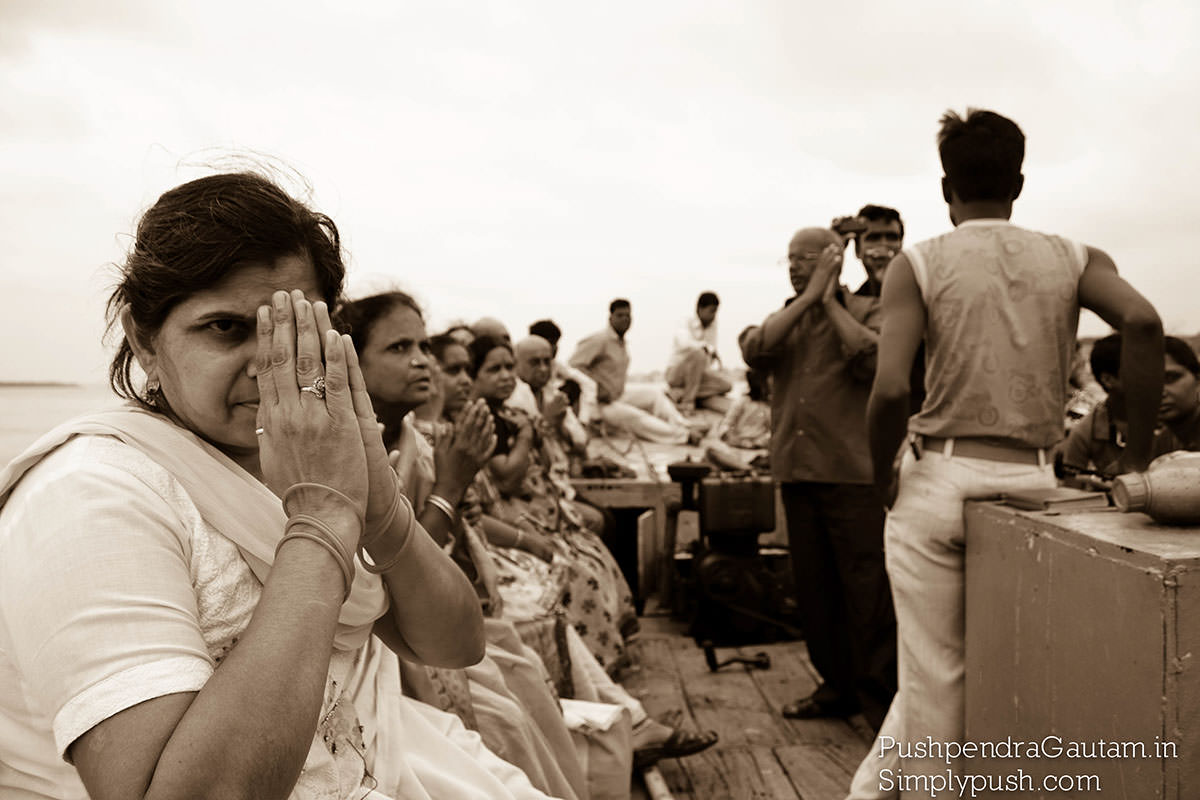
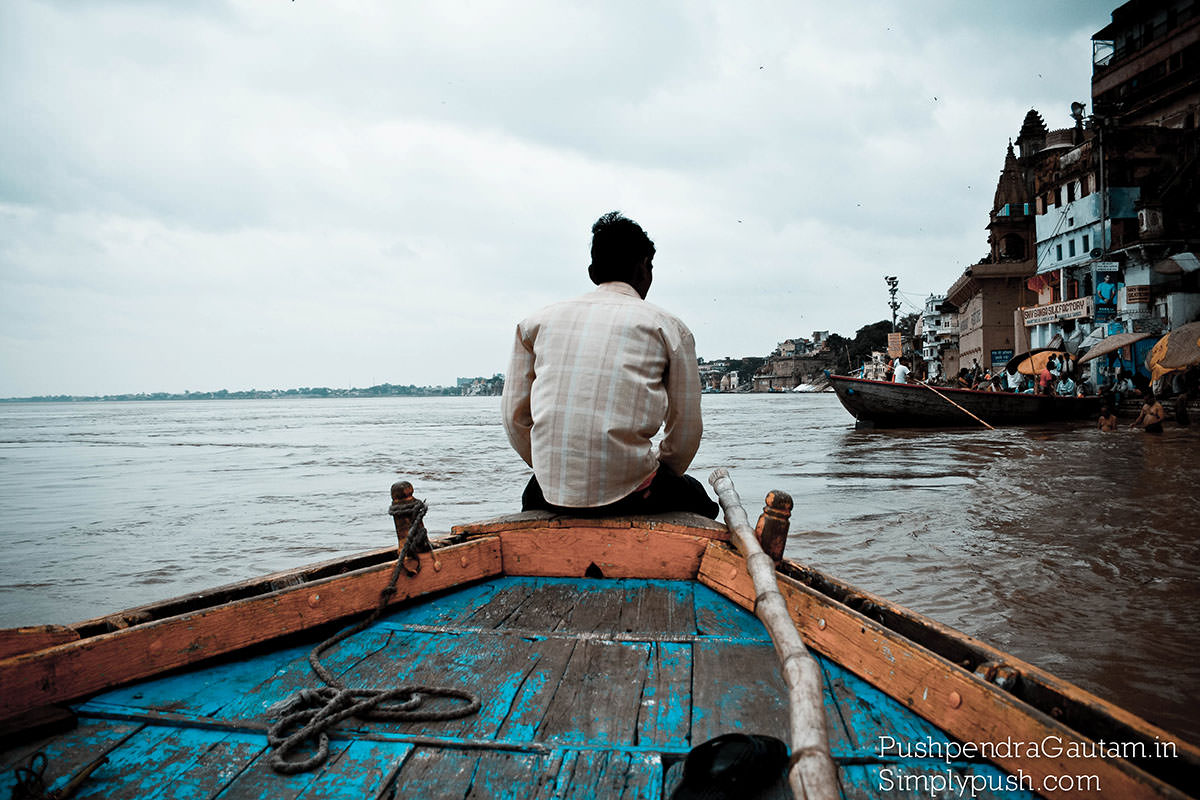
In the Rigveda, an ancient Indian sacred collection of Vedic Sanskrit hymns, the city is referred to as Kāśī or Kashi, the "luminous city as an eminent seat of learning". One of the seven Holy Cities, one of the twelve Jyotir Linga sites and also a Shakti Pitha site, it is the most favored place for Hindus to die and be cremated.
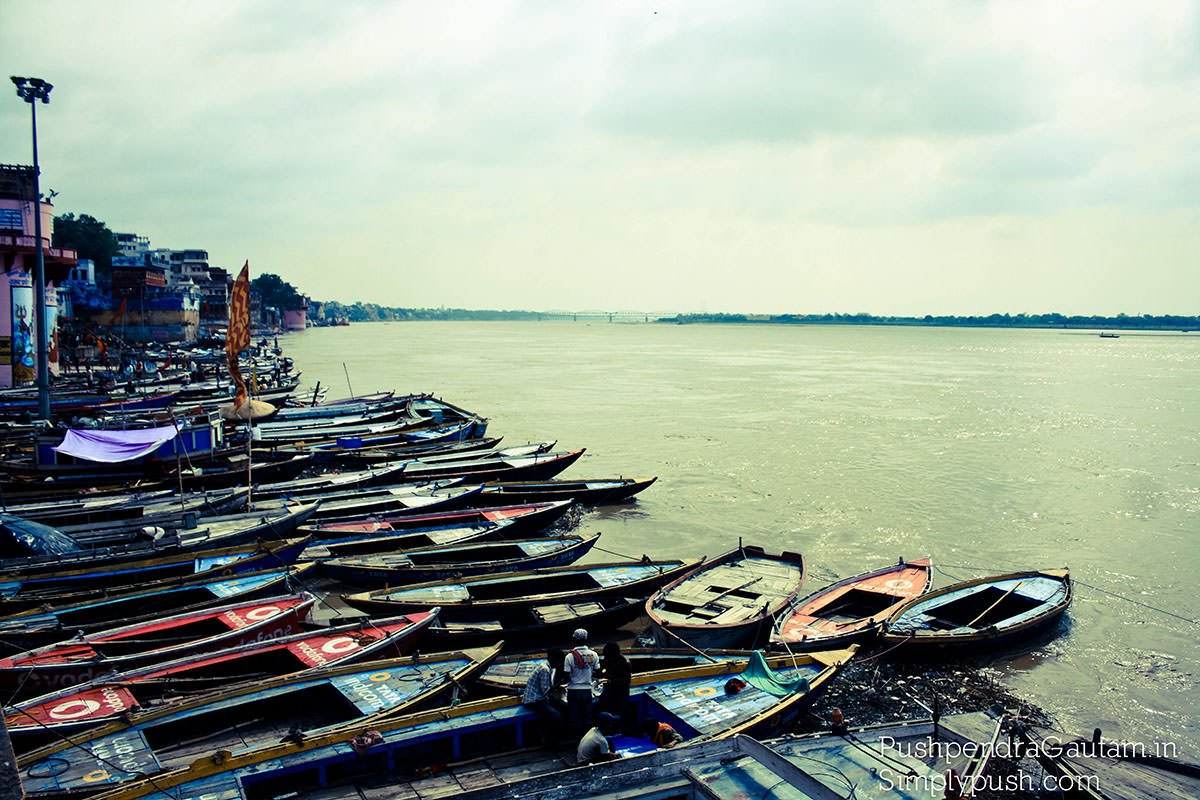
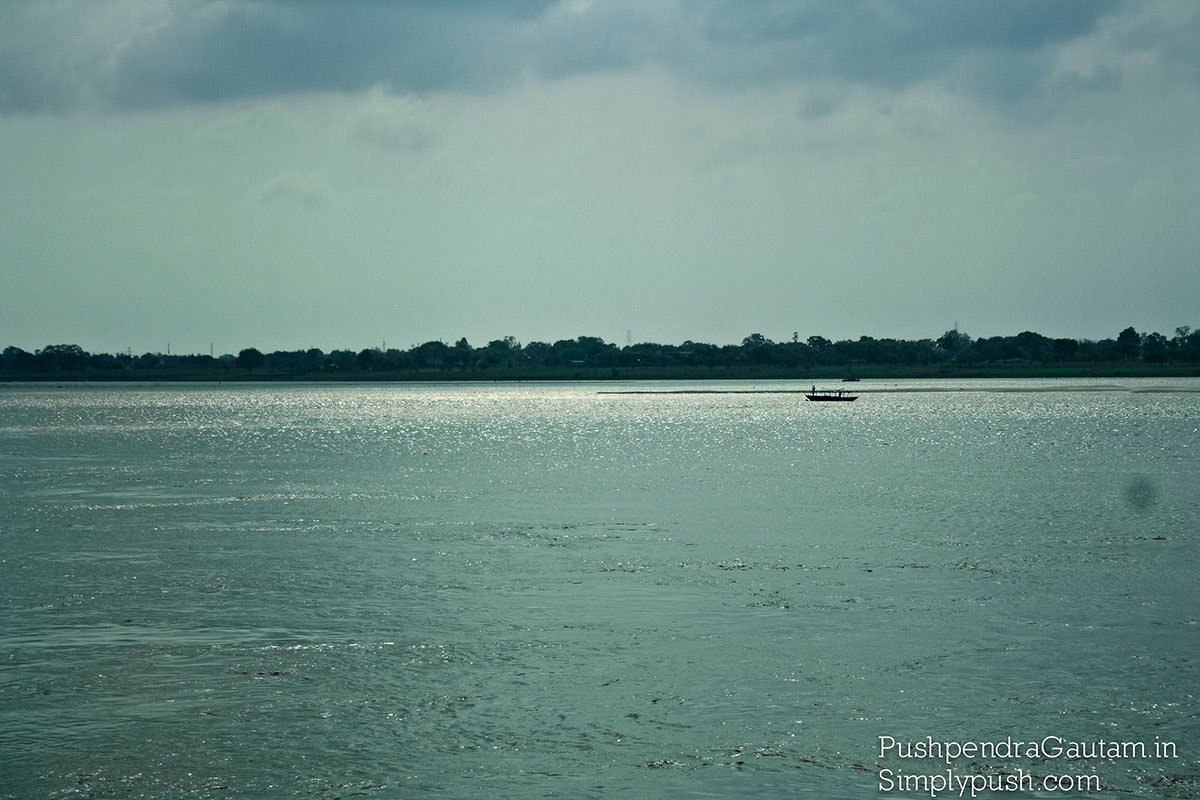
Hindus believe that a dip in the river Ganga will wash away sins, and that dying and being cremated in Varanasi will grant liberation from the cycle of rebirth.
Myths and hymns speak of the waters of the Ganges River as the fluid medium of Shiva's divine essence and a bath in the river is believed to wash away all of one's sins. The particular river-side location of Banaras is considered especially potent because, in less than six miles (ten kilometers), the Ganges is met by two other rivers, the Asi and the Varana.
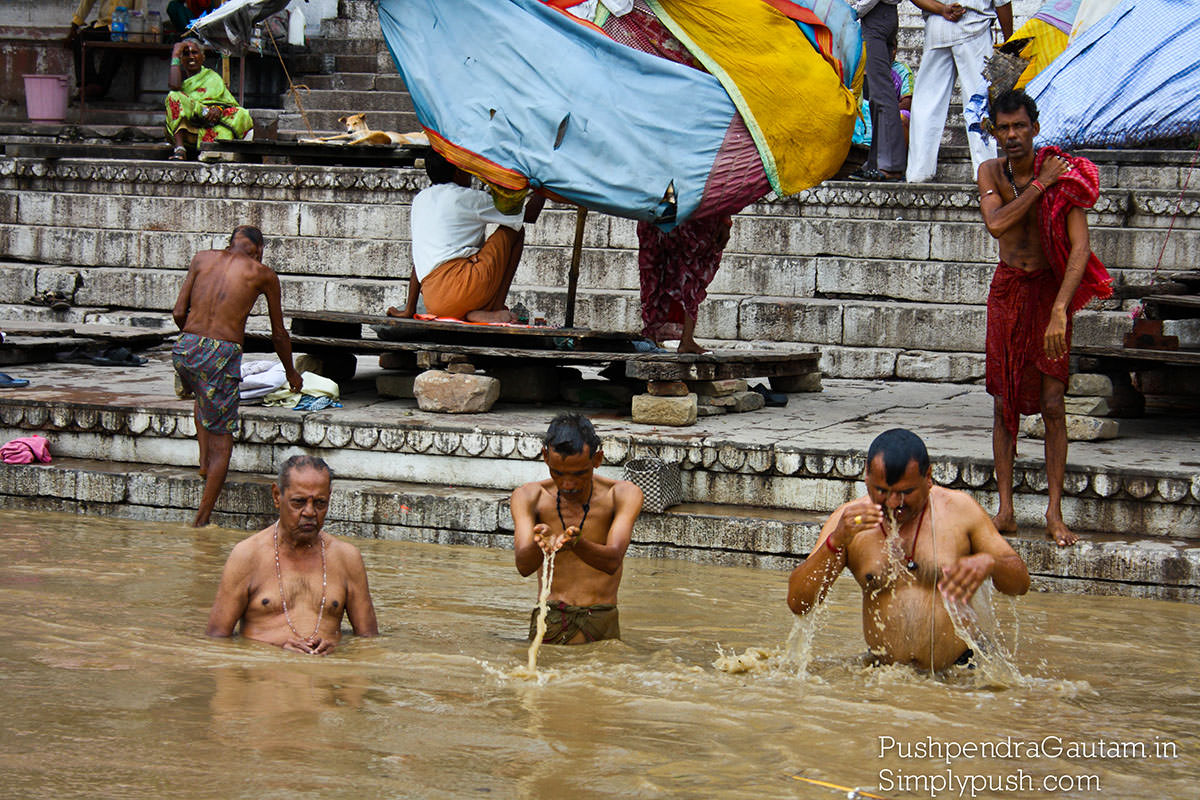
Buddha is believed to have founded Buddhism here around 528 BC when he gave his first sermon, "The Setting in Motion of the Wheel of Dharma", at nearby Sarnath.Goswami Tulsidas wrote his epic poem on Lord Rama's life called Ram Charit Manas in Varanasi. Kabir, Ravidas were born here. Guru Nanak Dev visited Varanasi for Shivratri in 1507, a trip that played a large role in the founding of Sikhism.

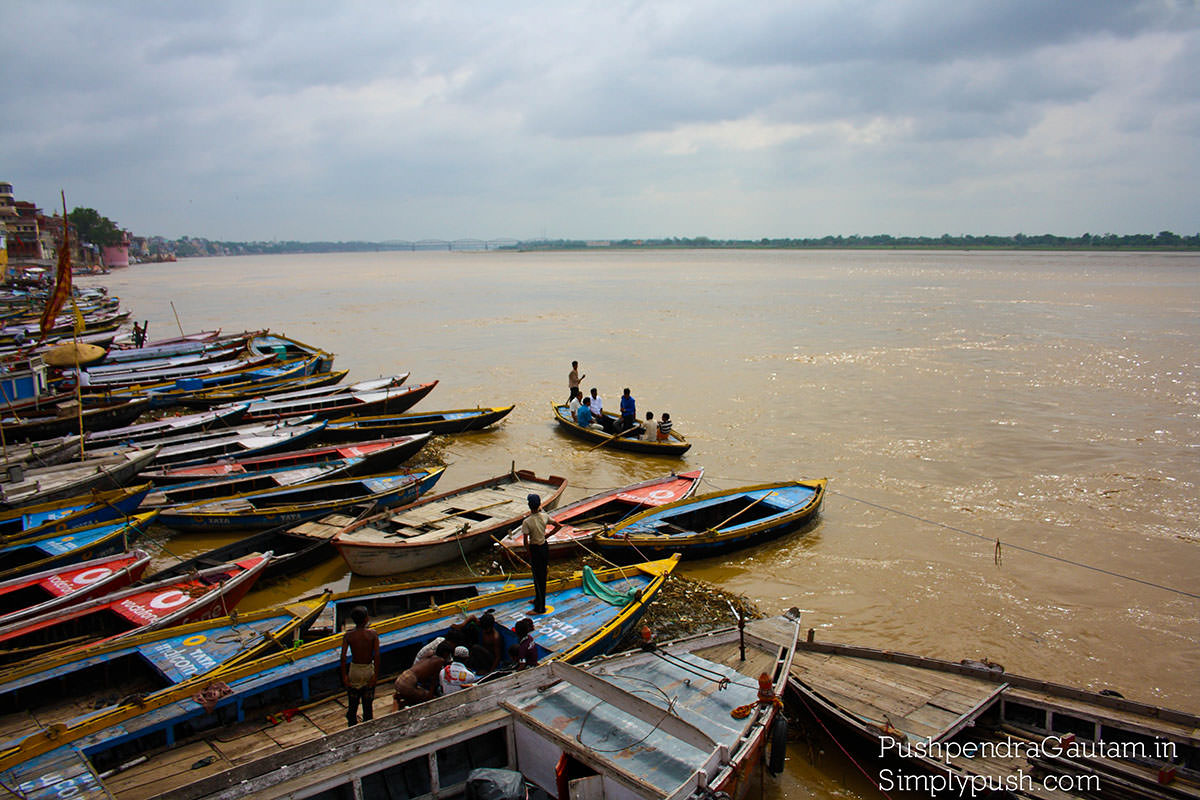
Here whatever is sacrificed, chanted, given in charity, or suffered in penance, even in the smallest amount, yields endless fruit because of the power of that place. Whatever fruit is said to accrue from many thousands of lifetimes of asceticism, even more than that is obtainable from but three nights of fasting in this place.
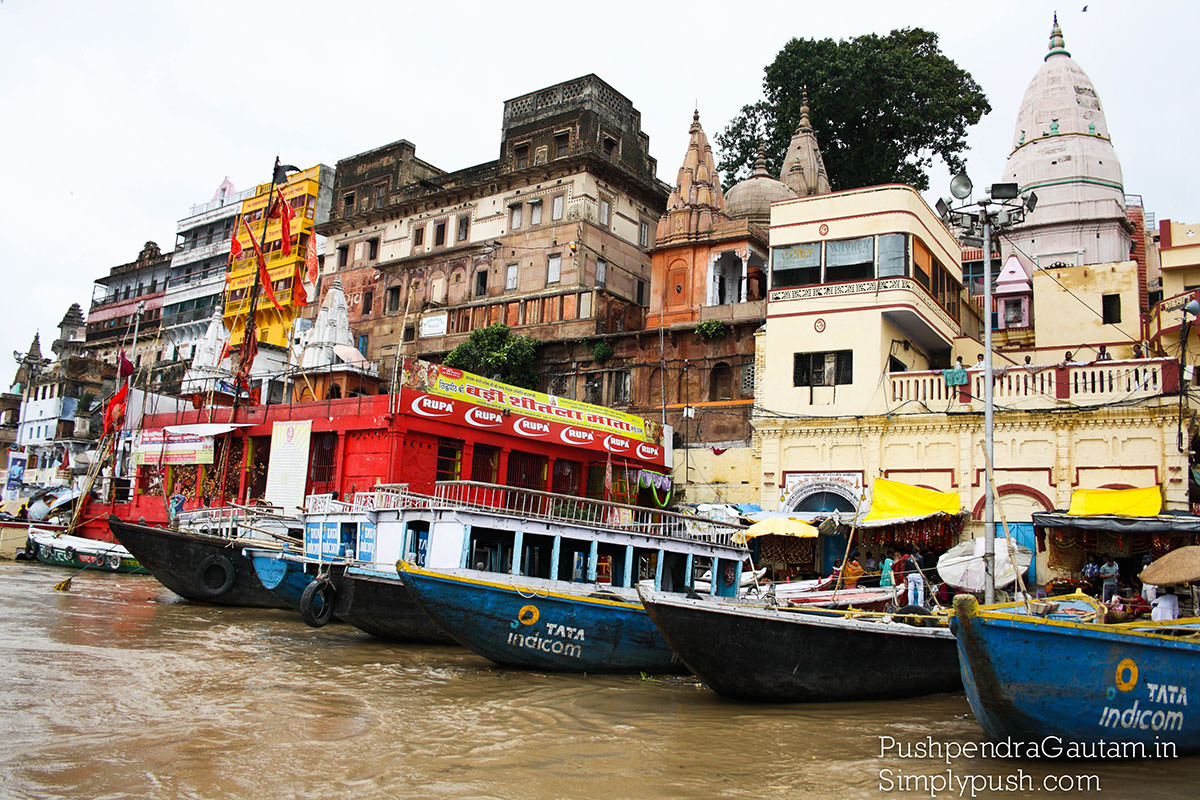
Known in different eras as Avimukta, Varanasi and Kashi, meaning “where the supreme light shines”, this great north Indian center of Shiva worship has had more than 3000 years of continuous habitation. Few standing buildings are older than the 16th century, however, as Muslim armies raiding from the 11th century onward destroyed the ancient Hindu temples and erected mosques on their foundations. Qutbuddin Aibak's armies were said to have destroyed more than a thousand temples in 1194, and Shah Jahan, the builder of the Taj Mahal, had seventy-six temples demolished. The city's primary Shiva shrine, the Jyotir Linga Visvanatha or ‘Golden Temple’, was rebuilt in 1776 across the road from its original location (now occupied by the Jnana Vapi mosque). Adjacent to this mosque is the Jnana Vapi well, the ritual center and axis mundi of Banaras. The Jnana Vapi, or Well of Wisdom, is said to have been dug by Shiva himself, and its waters carry the liquid form of Jhana, the light of wisdom. The imposing Alamgir mosque stands on the site of another of Kashi's most ancient and sacred shrines, the temple of Bindu Madhava.
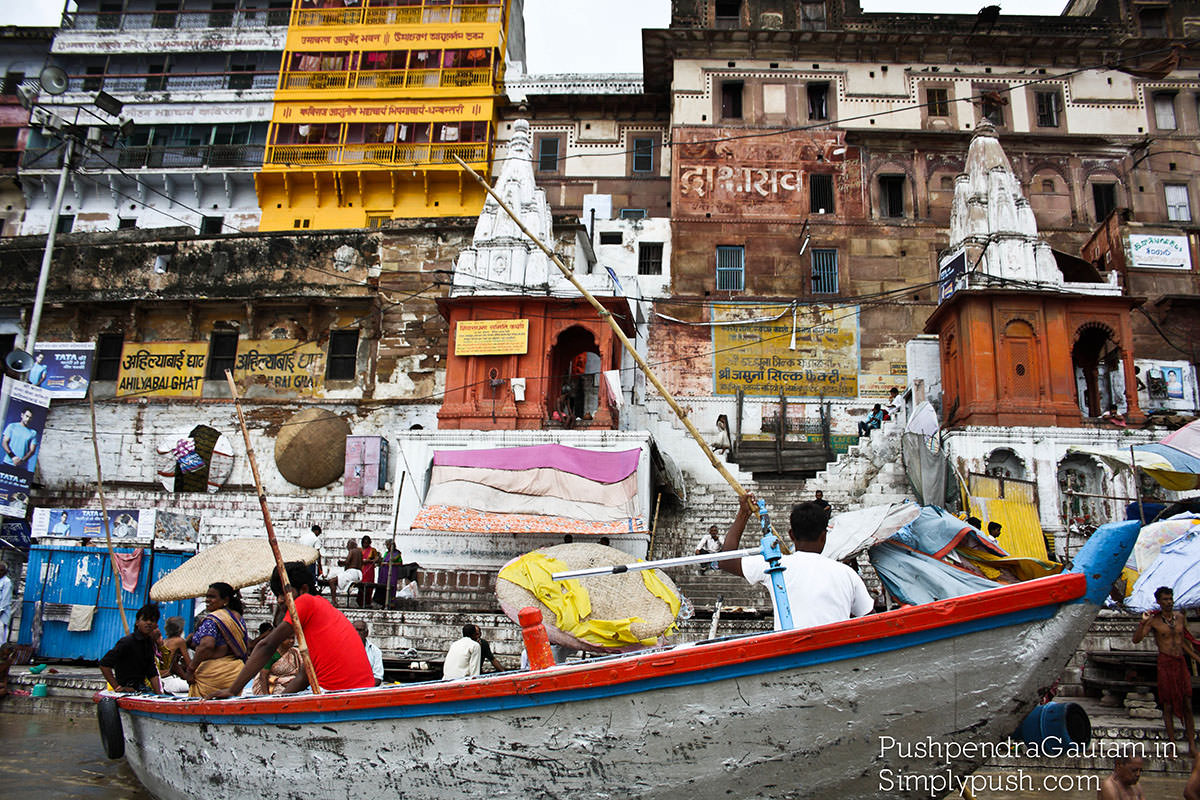
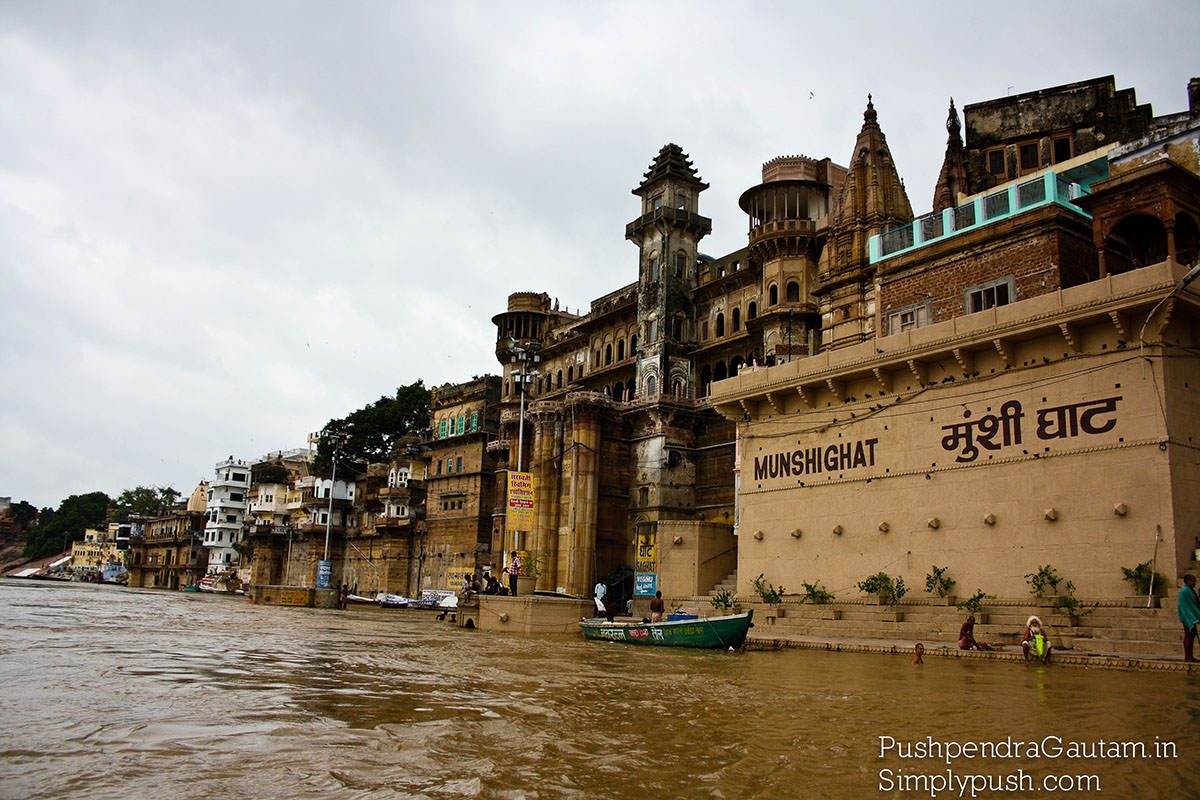
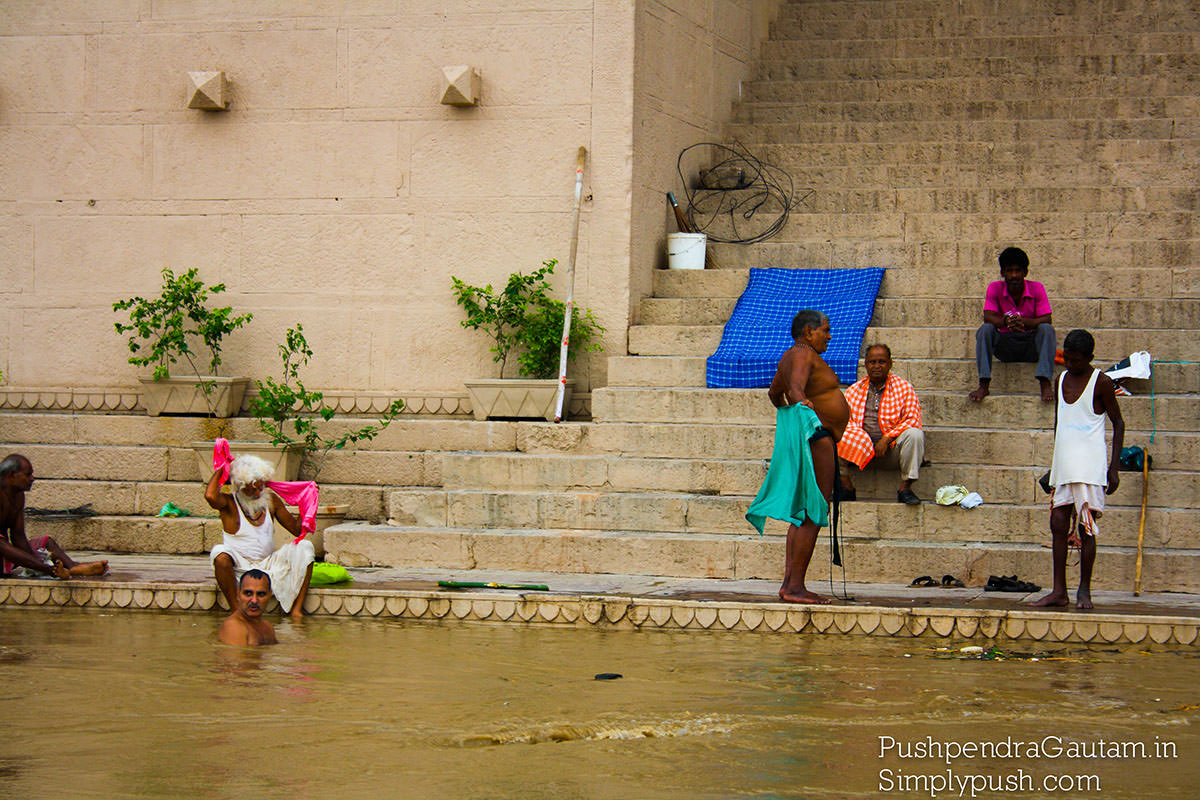
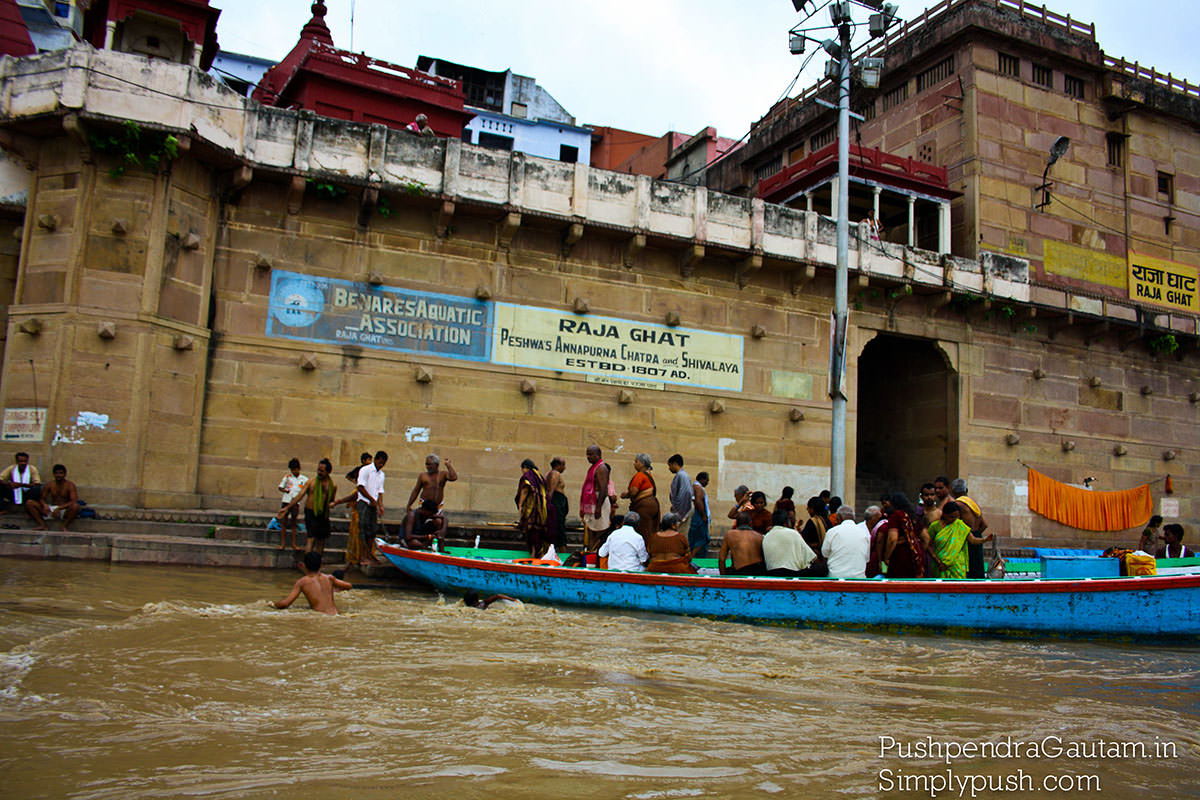
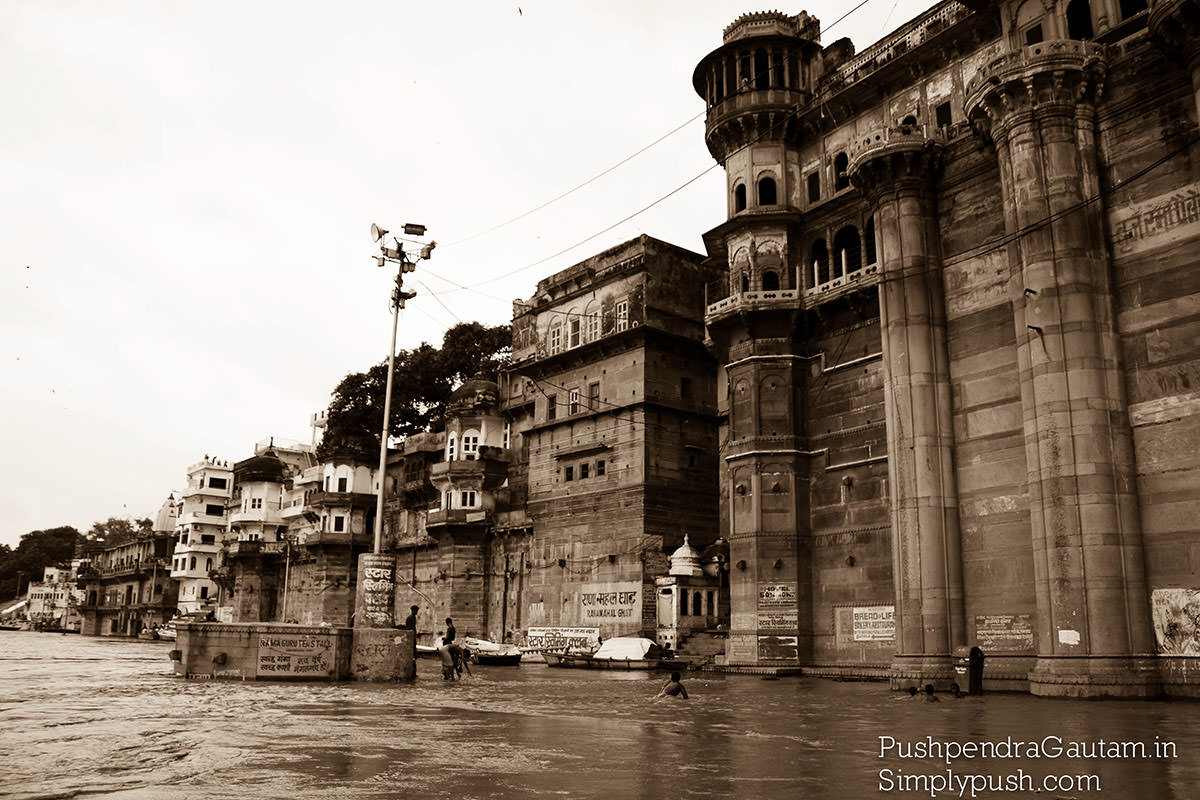
Kashi is also traditionally called Mahashamshana, ‘the great cremation ground’. Hindus believe that cremation at the holy city insures moksha, or 'final liberation of the soul from the endless cycle of birth, death, and rebirth'. Because of this belief, dying persons and dead bodies from far-off places are brought to Kashi for cremation at the Manikarnika and other cremation sites (five principal and eighty-eight minor cremation/bathing sites lie along the Ganges).
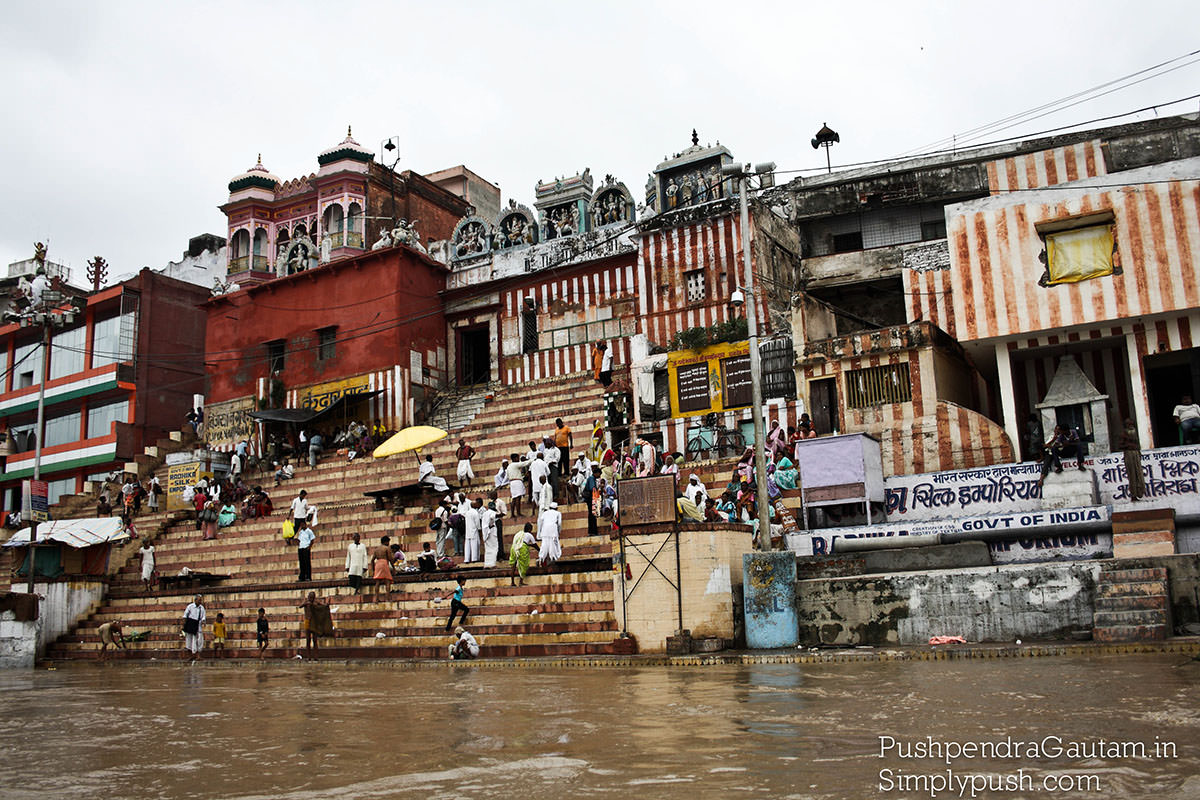
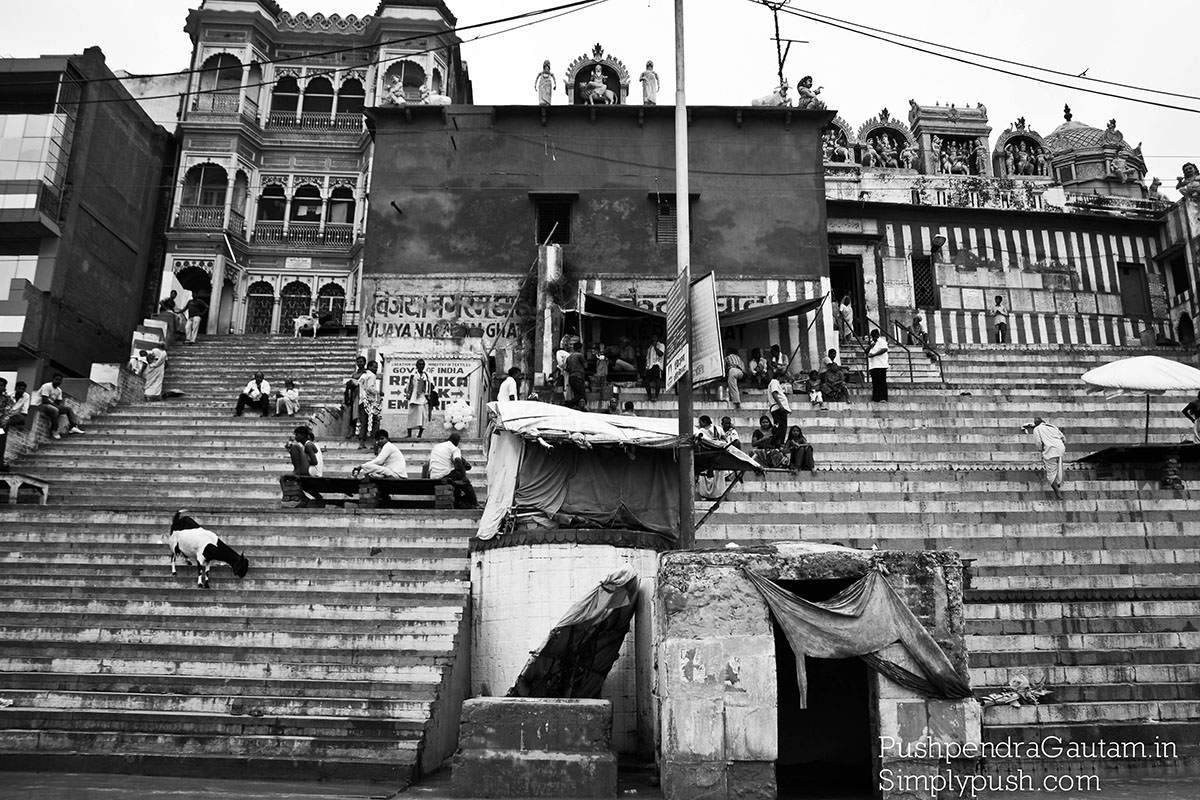
Encircling the holy city at a radius of five miles is the sacred path known as the Panchakroshi Parikrama. Pilgrims take five days to circumambulate Kashi on this fifty-mile path, visiting 108 shrines along the way. If one is unable to walk the entire path a visit to the Panchakroshi Temple will suffice. By walking round the sanctuary of this shrine, with its 108 wall reliefs of the temples along the sacred way, the pilgrim makes a symbolic journey around the sacred city. Another important Banaras pilgrimage route is the Nagara Pradakshina, which takes two days to complete and has seventy-two shrines.
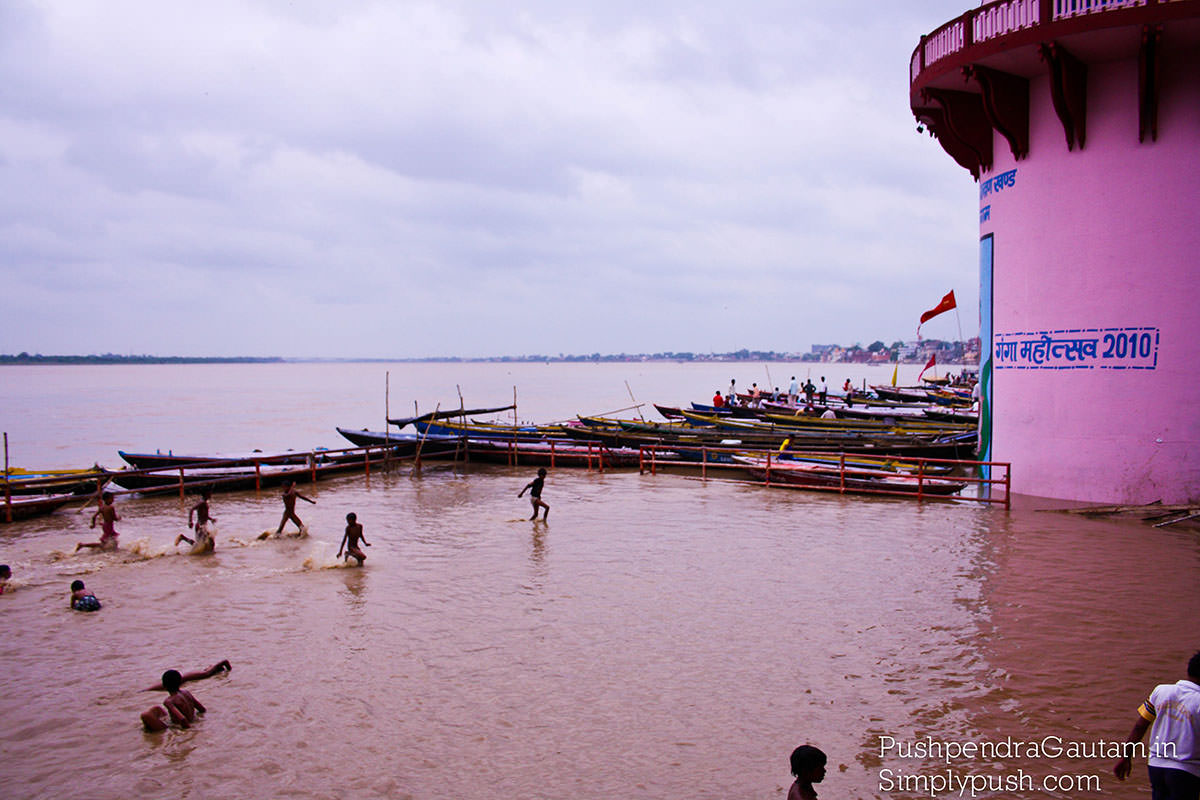
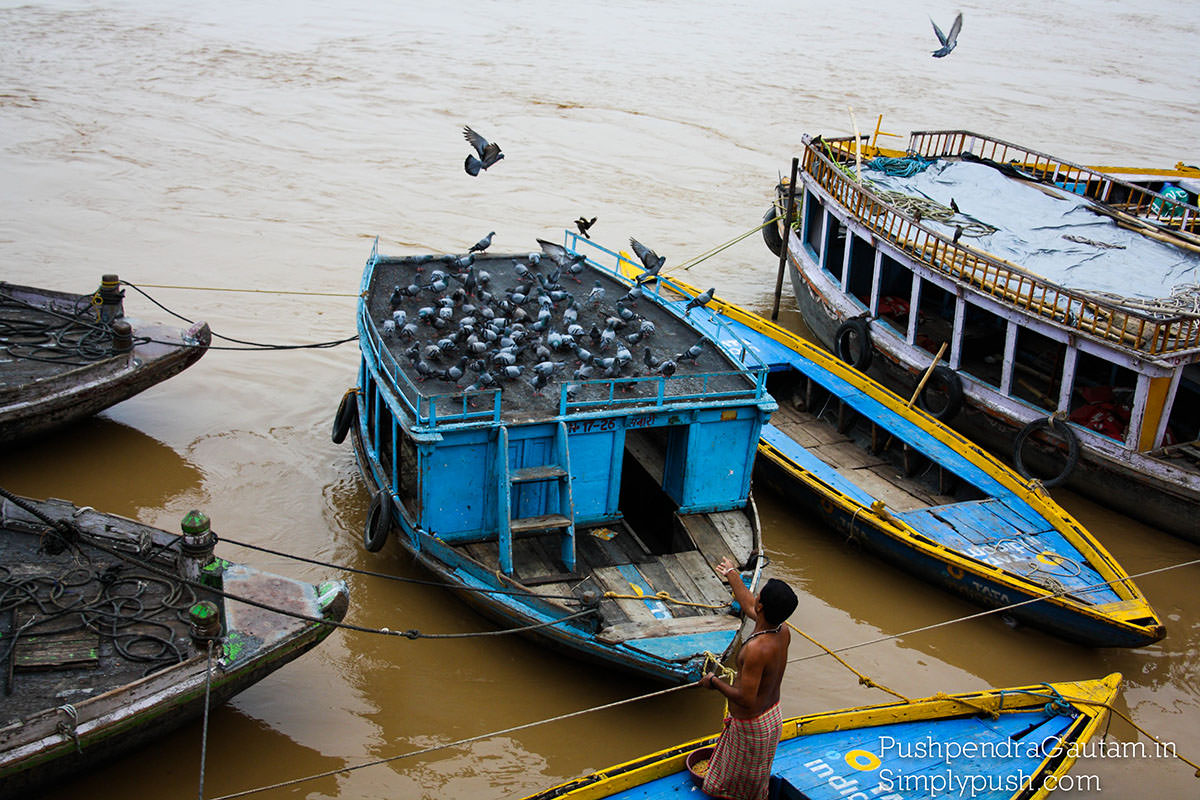
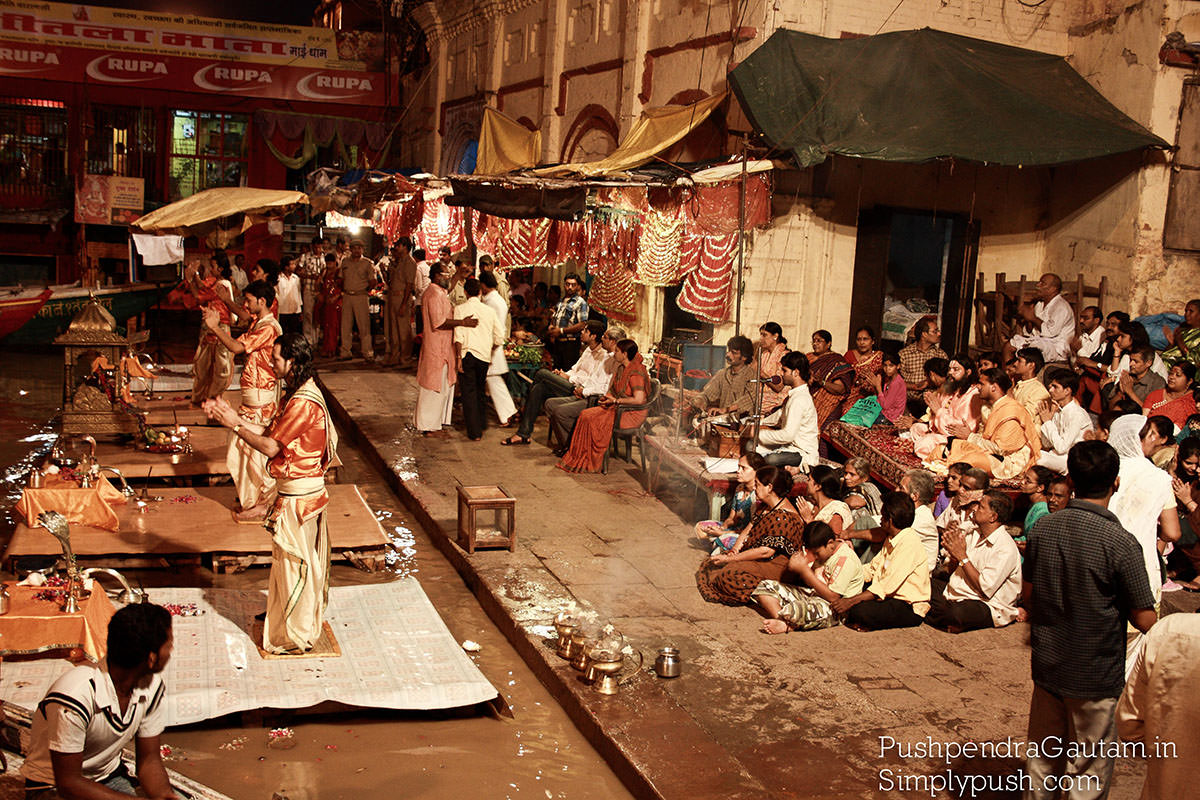
The main railway station Varanasi Junction, also known as Varanasi Cantonment, is west of the old city and a short rickshaw ride away; the bus station is also close by. Cycle or auto-rickshaws can be found outside the station; if heading to the old city just ask for Dasaswamedh Ghat. The airport is 16 miles away.
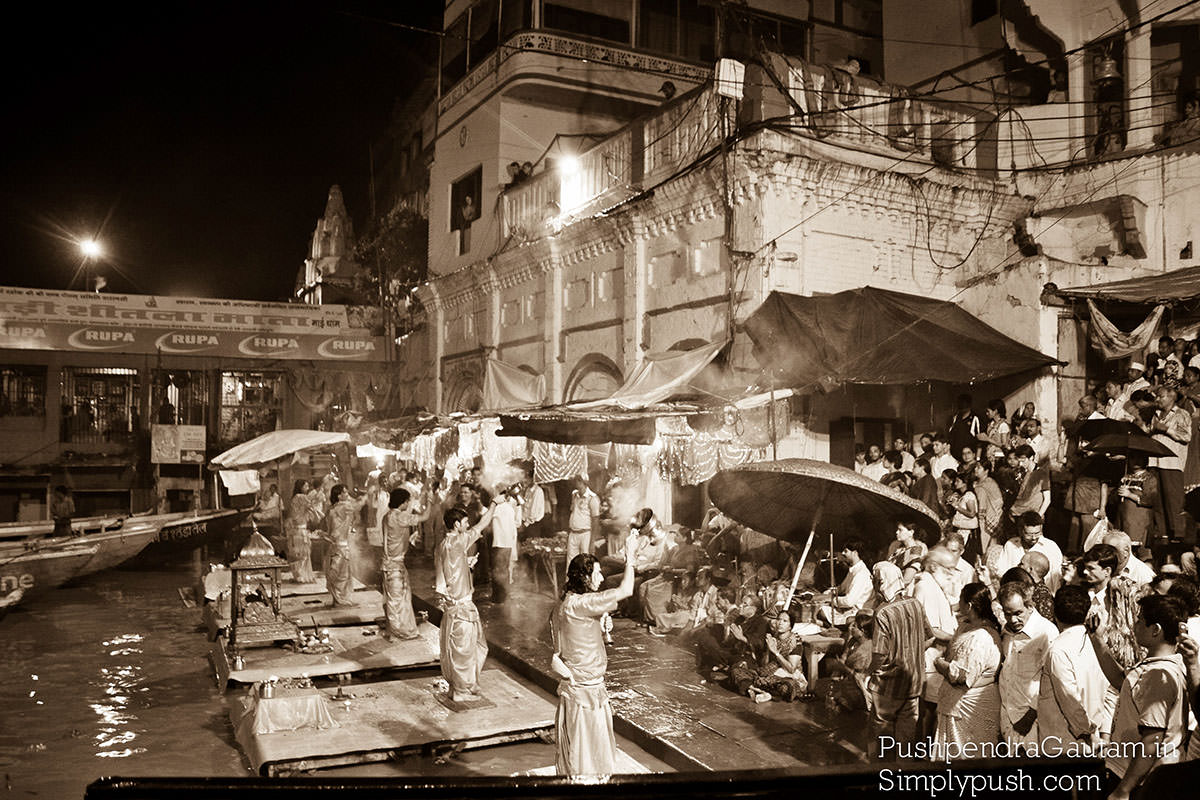
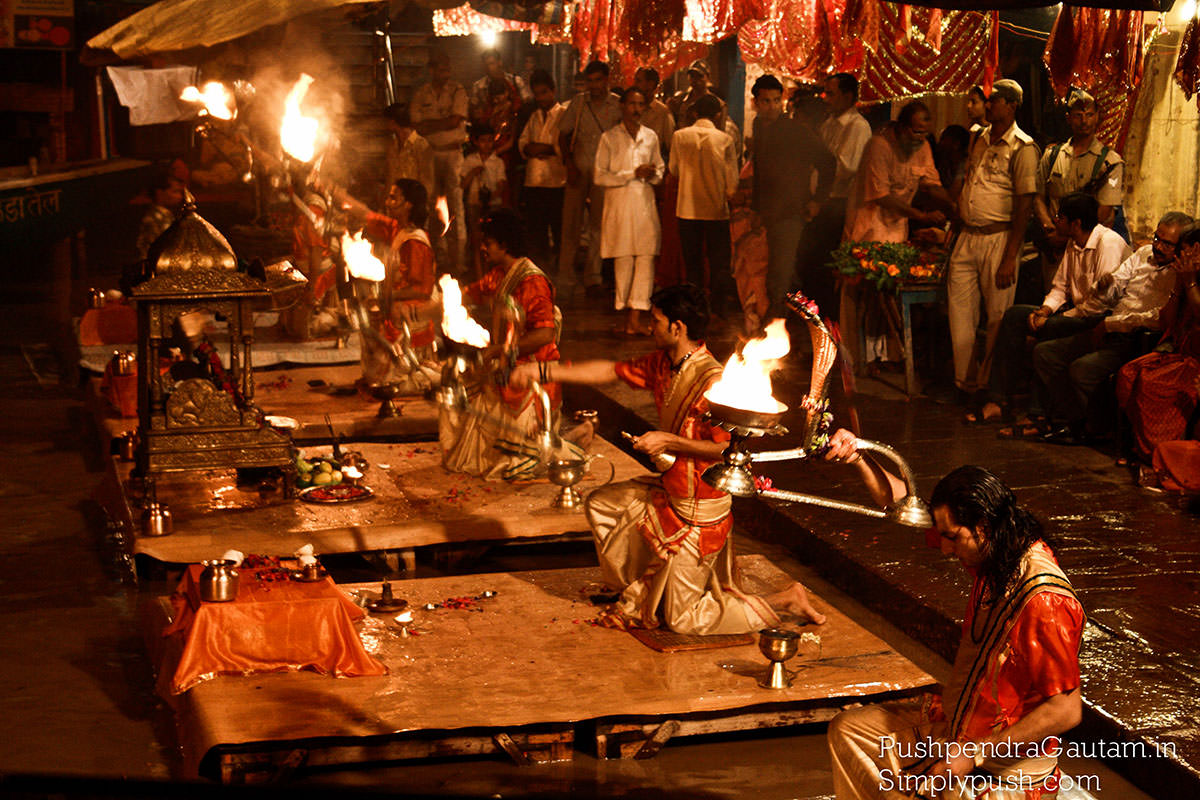
How, where and what in the city ?
- Airport: Lal Bahadur Shastri Airport is located 25km northwest of the city center.Train Station :Varanasi Junction,Mughal Sarai Junction & Manduadih Railway Station are the 3 stations here.
- Flite: Direct flite to Varanasi Airport from Delhi / Lucknow
- By Train: It is the easiest means to reach to the Varanasi from any city such as Delhi, Agra, Lucknow, Mumbai, Chennai, Kolkata, etc. Almost all the trains of Northern Eastern Railway (NER) pass through the Mughal Sarai Junction that is just 17 kilometer from the Varanasi Junction. However Varanasi Junction itself is a huge station and almost all major trains go to Varanasi Junction.You can also take a bus/train from Delhi to Varanasi or Lucknow to Varanasi. Journey time is around 12-14 hours(from Delhi) & 5-6 hours(from Lucknow).
- Take to the water:A magical dawn boat ride on the Ganges will give you an unparalleled view of the ghats and temples.
- Get lost in the galis: these dusty, noisy alleys can be disorientating, but that’s part of the fun. You’ll see shops selling silk, crafts, food, tucked-away shrines, candlelit deities in alcoves, and the odd sacred cow wandering around.
- Stroll along the ghats: Ghats (Manikarnika Ghat,Assi ghat, Dashaswamedh Ghat, tulsi Ghat,Harishchandra Ghat to name a few)
- Ganga Aarti / Attend puja: Every evening the mesmerising puja, or prayer ceremony, takes place at Dasaswamedh Ghat and the air is filled with prayers, chants, music, and incense. Cymbals crash, bells ring, drums bang, and tea lights are cast into the Ganges.
- Witness the open cremation grounds of Manikarnika Ghat and Harishchandra Ghat
- Escape to Sarnath: take a rickshaw for an exhilarating eight-mile ride through Varanasi’s busy, hot streets to sacred Sarnath for some fresh air and to see where Buddha preached his sermon in the Deer Park; the spot is marked by a stupa.
- Kashi Vishwanath temple : One of the 12 jyotira
- Jnanavapi Kupa (“well of wisdom”)
- Kapileshwar temple at Kapiladhara, “the oldest site mentioned in the Mahabharata”
- Kardameshwar temple
The best time to visit is between November and March; expect a little rain around late Jan and early Feb. Summer is very hot (Apr to mid-June). During and just after the monsoons (mid-June to Sept), the Ganga rises high up the ghats..
There’s nearly always a festival on in the city, the most famous being Makar Sankranti (Jan 14), Mahashivratri (Feb-Mar), Holi (Mar-Apr), Buddha Purnima (Apr-May), Ganga Dashahara (May-June), Lolarka Chhatha Mela (Aug-Sept), Durga Puja Dashahara (Sept-Oct), Ramlila (Sept-Oct), Surya Shashthi (Chhath Puja) (Oct-Nov) and Dev Deepavali (Oct-Nov). The theatrical narration of Ramlila over 31 days in September-October is most famous at Ramnagar, where it is supported and attended by the Maharaja.

